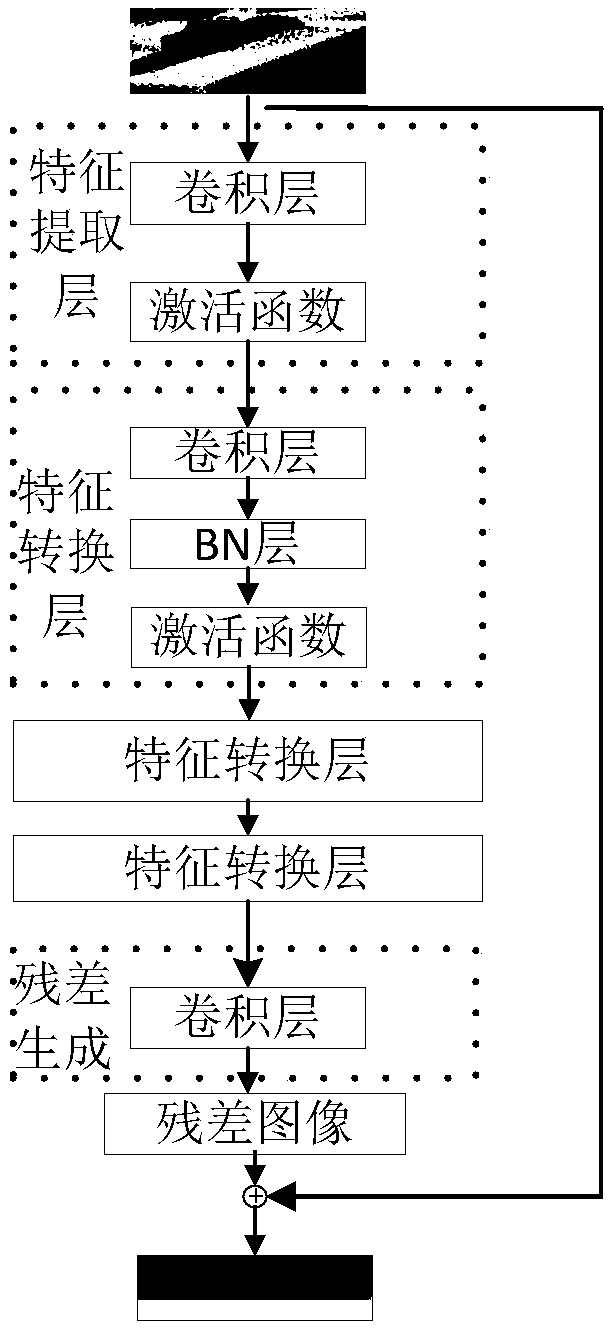An adaptive image denoising method based on depth learning
A deep learning and adaptive technology, applied in the field of image processing, can solve problems such as complex optimization, denoising time delay, and inability to realize blind image denoising, so as to ensure denoising accuracy and speed, improve training performance, and save training costs Effect
- Summary
- Abstract
- Description
- Claims
- Application Information
AI Technical Summary
Problems solved by technology
Method used
Image
Examples
Embodiment Construction
[0031] The technical solutions of the present invention will be further described in detail below in conjunction with the accompanying drawings and specific embodiments.
[0032] The adaptive image denoising method based on deep learning of the present embodiment includes the following steps:
[0033] Step 1) Create an image set.
[0034] Image y with noise corresponds to ideal noise-free image u and noise v, then y=u+v. The standard deviation of the noise v is σ, where σ represents the noise level.
[0035] Obtain the Berkeley BSDS500 image data set and download the noise-free image from the Internet as the original noise-free image set, and use y=u+v to add noise with different σ values, and the noise image is cut into n*n size (n is a natural number), and processed to get N (N is a natural number) noise-clean training images and corresponding noise square standard deviations The subscript i represents the serial number.
[0036] Step 2) Build an adaptive deep convoluti...
PUM
 Login to View More
Login to View More Abstract
Description
Claims
Application Information
 Login to View More
Login to View More - R&D
- Intellectual Property
- Life Sciences
- Materials
- Tech Scout
- Unparalleled Data Quality
- Higher Quality Content
- 60% Fewer Hallucinations
Browse by: Latest US Patents, China's latest patents, Technical Efficacy Thesaurus, Application Domain, Technology Topic, Popular Technical Reports.
© 2025 PatSnap. All rights reserved.Legal|Privacy policy|Modern Slavery Act Transparency Statement|Sitemap|About US| Contact US: help@patsnap.com



